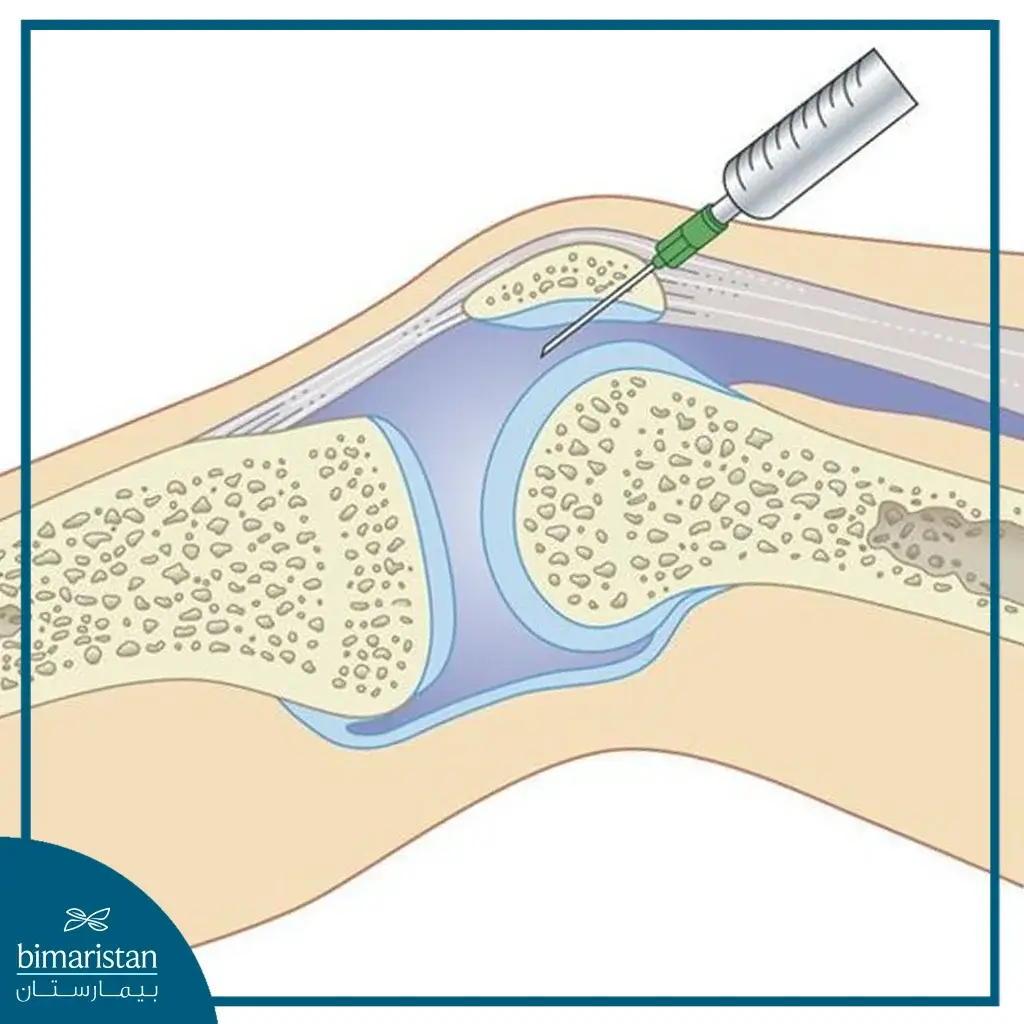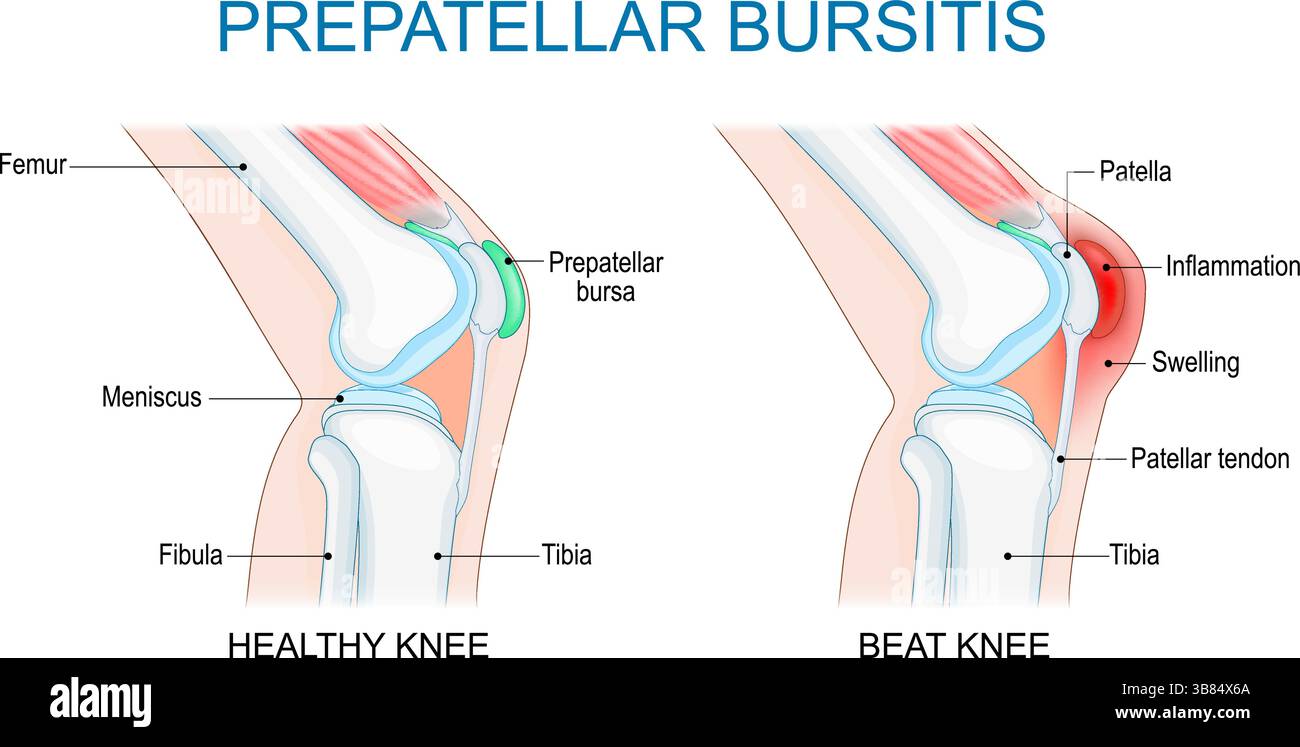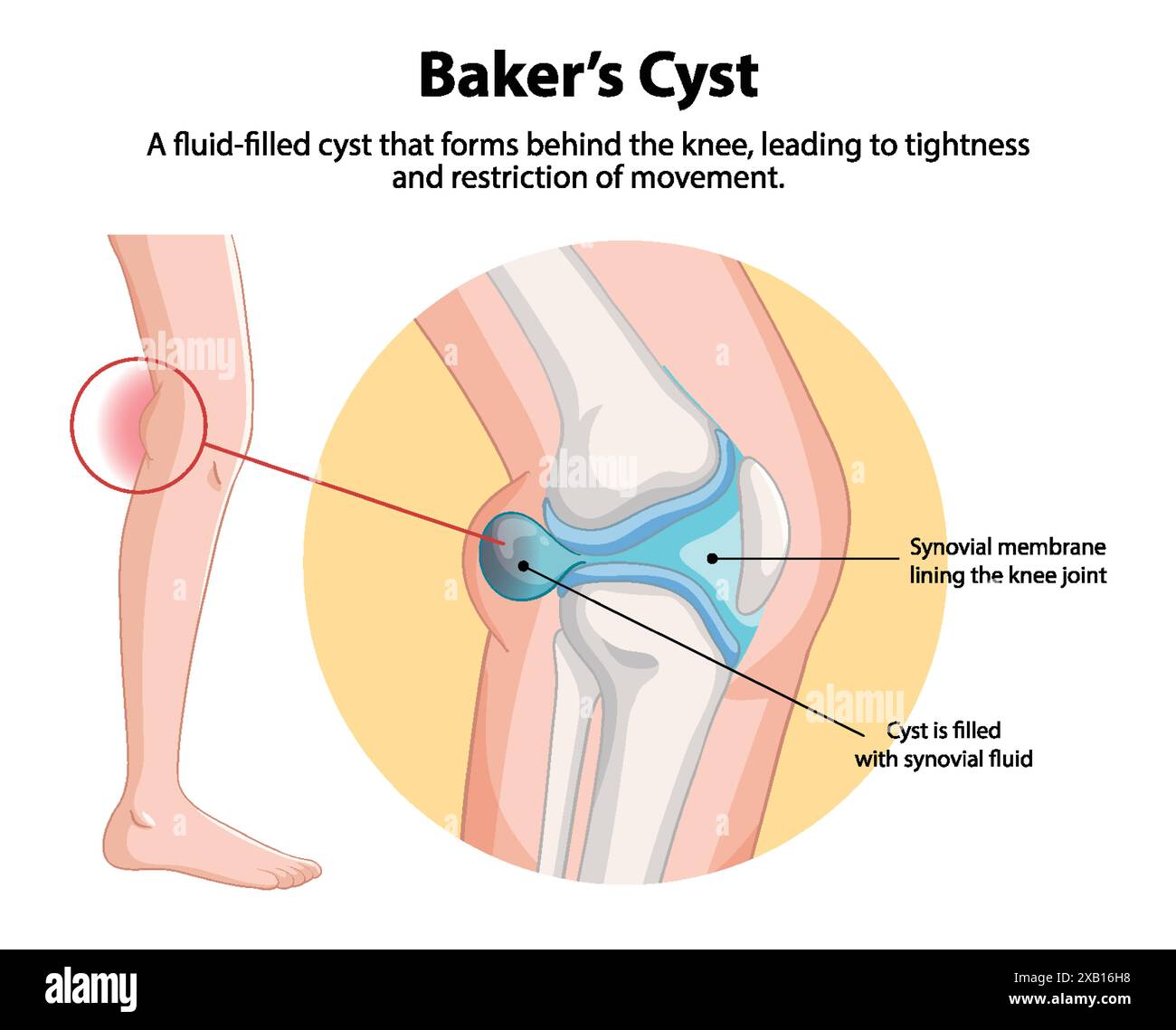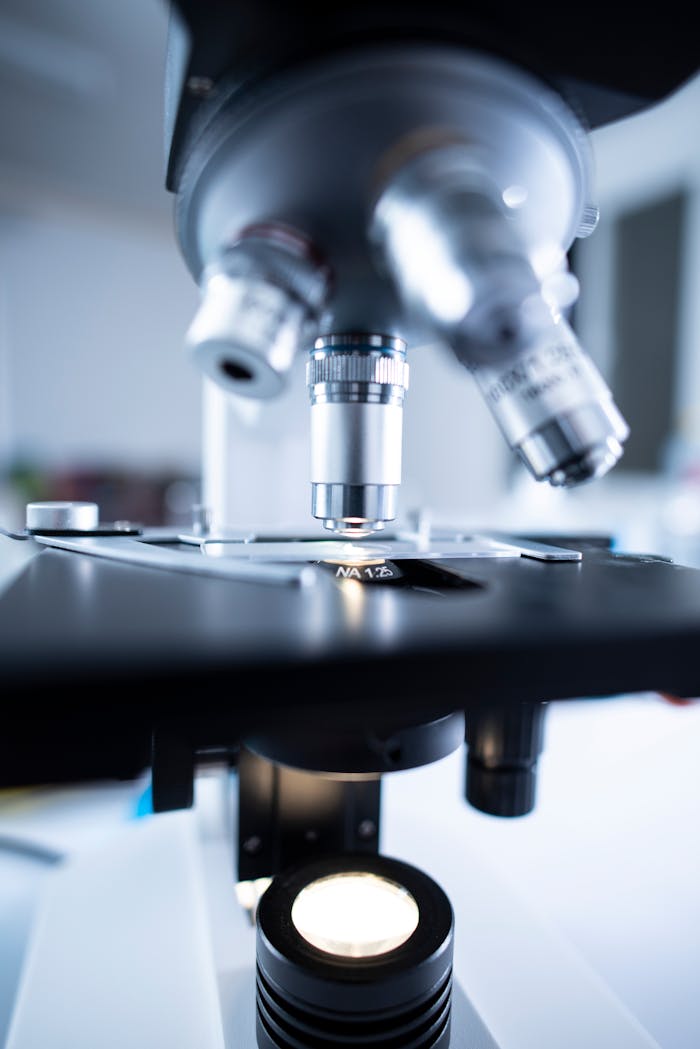When someone mentions “water in my knee,” it refers to knee effusion—an excess build-up of fluid in or around the knee joint. This fluid isn’t pure water but synovial fluid, and sometimes it may include blood, pus, or crystals depending on the cause. Here’s everything your readers need to know:
1. What Does “Water on the Knee” Mean?
The knee is a synovial joint, meaning it’s surrounded by a fluid-filled capsule that reduces friction and nourishes cartilage. When this fluid increases abnormally, it causes swelling, tightness, and discomfort—a condition called knee effusion or “water on the knee” verywellhealth.com+1en.wikipedia.org+1.
2. Common Causes of Knee Effusion
a) Injury or Trauma
- Injuries like torn ligaments (ACL, PCL), meniscus tears, fractures, or contusions can cause bleeding or swelling within the joint capsule boneandspine.com.
- Repetitive strain—common in athletes or those performing repetitive tasks—can also trigger inflammation and fluid buildup .
b) Arthritis & Inflammatory Conditions
- Osteoarthritis (OA): Wear-and-tear damage often leads to chronic synovial inflammation and fluid effusion .
- Rheumatoid and Psoriatic Arthritis: Autoimmune inflammation drives synovitis and significant fluid accumulation en.wikipedia.org+12boneandspine.com+12pmc.ncbi.nlm.nih.gov+12.
- Crystal-Induced Arthropathies: Gout and pseudogout—due to uric acid or calcium pyrophosphate crystal deposits—can cause acute joint swelling en.wikipedia.org.
c) Infection (Septic Arthritis)
- Joint infections are medical emergencies; fluid becomes purulent (pus-filled), accompanied by pain, redness, warmth, and fever en.wikipedia.org.
d) Cysts & Tumors
- A Baker’s cyst forms behind the knee when synovial fluid bulges into surrounding tissue—often linked to arthritis or injury orthoanswer.org+3en.wikipedia.org+3verywellhealth.com+3.
- Tumors (rarely) can also produce fluid accumulation .
3. Symptoms to Watch For
- Visible swelling, often “puffy” or ballooned.
- Pain—sharp or aching.
- Stiffness and reduced range of motion.
- A tight or heavy sensation inside the knee.
- With infection: redness, heat, fever, chills, and inability to bear weight en.wikipedia.org+4verywellhealth.com+4kphighlights.kp.org+4.
4. How is it Diagnosed?
4.1 Physical Examination
- Doctors look for swelling, test for fluid (bulge sign, patellar tap), and evaluate movement josr-online.biomedcentral.com+1en.wikipedia.org+1.
4.2 Imaging
- X-rays: Show joint changes, fractures, or arthritis .
- Ultrasound: Detects and measures fluid pockets precisely pmc.ncbi.nlm.nih.gov+2boneandspine.com+2verywellhealth.com+2.
- MRI: For suspected ligament or meniscal tears, tumors, or deep inflammation pmc.ncbi.nlm.nih.gov+15boneandspine.com+15en.wikipedia.org+15.
4.3 Arthrocentesis (Joint Aspiration)
- A needle draws fluid for analysis of clarity, cell count, crystals, bacteria, and glucose levels. Essential for confirming gout or infection boneandspine.com+1en.wikipedia.org+1.
5. Treatment Strategies
5.1 Immediate Care (RICE + NSAIDs)
- Rest, Ice, Compression, Elevation and NSAIDs like ibuprofen reduce pain and swelling boneandspine.com+1verywellhealth.com+1.
5.2 Aspiration & Steroid Injections
- Fluid drainage eases pressure; steroid injections decrease inflammation, typically after ruling out infection boneandspine.com.
5.3 Treating the Underlying Cause
- Infections: Require immediate IV antibiotics and sometimes surgical drainage ncbi.nlm.nih.gov+3verywellhealth.com+3boneandspine.com+3.
- Gout/Pseudogout: Managed with NSAIDs, colchicine, steroids, and chronic urate-lowering therapy pmc.ncbi.nlm.nih.gov+3boneandspine.com+3en.wikipedia.org+3.
- Arthritis: Treated with NSAIDs, DMARDs (e.g., methotrexate), biologics (e.g., TNF blockers), and sometimes hyaluronic acid injections .
- Injury-related tears or fractures: May require arthroscopic surgery or immobilization my.clevelandclinic.org+2boneandspine.com+2verywellhealth.com+2.
- Baker’s cysts or tumors: May require aspiration or surgical removal if symptomatic en.wikipedia.org+3en.wikipedia.org+3verywellhealth.com+3.
5.4 Physical Therapy
- Key after treatment—helps restore quadriceps strength, range of motion, and joint stability .
6. Risks & Complications
- Untreated may lead to chronic stiffness, cartilage damage, muscle weakness, and altered gait ncbi.nlm.nih.gov.
- Severe infections jeopardize joint integrity; delayed care may result in permanent damage en.wikipedia.org+10ncbi.nlm.nih.gov+10verywellhealth.com+10.
- Recurrent effusions often indicate an underlying chronic condition needing long-term management verywellhealth.com+3boneandspine.com+3en.wikipedia.org+3.
7. Prevention & Self-Care Tips
- Maintain a healthy weight to reduce joint load ncbi.nlm.nih.gov+1my.clevelandclinic.org+1.
- Strengthen muscles, especially quadriceps and hamstrings, to support knees en.wikipedia.org+2pmc.ncbi.nlm.nih.gov+2aafp.org+2.
- Avoid overuse and repetitive stress; use proper form and protective gear during activities aafp.org+2ncbi.nlm.nih.gov+2verywellhealth.com+2.
- Early treatment of injury, arthritis, or infection prevents complications .
8. When to See a Doctor Immediately
Seek urgent help if you experience:
- Sudden swelling within hours of injury
- Severe pain, redness, warmth, or fever (possible septic arthritis)
- Inability to move the knee or bear weight
Early intervention can prevent long-term damage en.wikipedia.orgverywellhealth.comen.wikipedia.org+3my.clevelandclinic.org+3aafp.org+3.
9. Why Understanding Effusion Matters
- It’s a sign of an underlying issue—not just “water”—that demands accurate diagnosis.
- Knowing the cause—from arthritis to infection—helps target proper care.
- Effusion indicates the need for lifestyle changes or medical interventions to maintain joint health.
🩺 Final Thoughts
- “Water on the knee” means knee effusion—a buildup of synovial fluid in the joint.
- Causes range from injury and arthritis to infection and cyst formation.
- Diagnosis includes exams, images, and fluid aspiration.
- Treatment covers RICE, medications, fluid removal, therapies, and sometimes surgery.
- Prevention lies in healthy lifestyle habits and prompt treatment of knee issues.
💡 Suggested Blog Enhancements
- Include real-life images of swollen knees or effusion procedures (with proper rights).
- Add a short case study (e.g., effusion after a sports injury vs. gout).
- Feature a question box (“When was your last knee injury?”) to encourage comments.
📰 For Further Reading
- “Water on the Knee (Effusion) Causes and Treatments” — Verywell Health pmc.ncbi.nlm.nih.gov+3verywellhealth.com+3verywellhealth.com+3
- “Joint Effusion (Swollen Joint)” — Verywell Health overview verywellhealth.com+2verywellhealth.com+2my.clevelandclinic.org+2




Here are four clear illustrations to enrich your health blog post about knee effusion (“water in the knee”):
- Joint aspiration diagram – Shows fluid being drawn from the knee capsule, helping readers understand how effusion is diagnosed and treated.
- Inflamed knee anatomical image – Highlights the swollen synovial area visually for educational clarity.
- Anatomical joint diagram – Labeled view of knee anatomy, useful for explaining key structures (e.g., synovial fluid, cartilage).
- Effusion illustration – Demonstrates fluid accumulation within the knee joint.







Leave a Reply